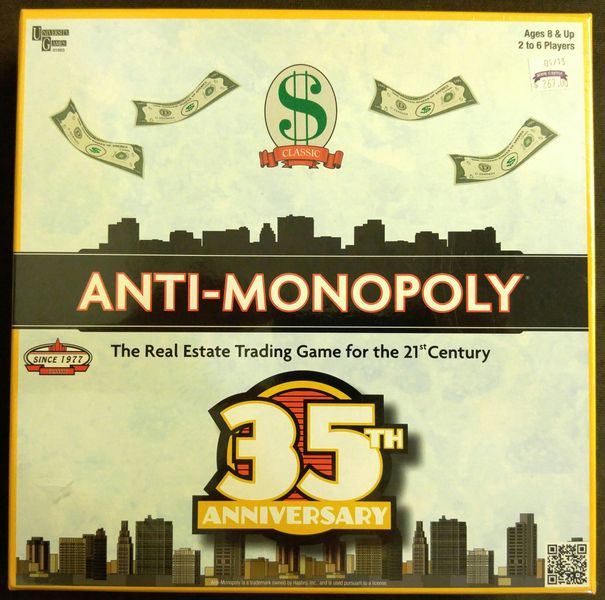Anti-Monopoly (1973) Board Game
Anti-Monopoly is a board game created by Ralph Anspach in 1973 as a response to the popular game Monopoly. It was designed to showcase the negative aspects of monopolies and promote fair competition in the economy. The game has gained a following over the years, particularly for its unique take on economic principles.
Game Components of Anti-Monopoly
How To Setup Anti-Monopoly
To set up Anti-Monopoly, begin by placing the board in the middle of the playing area. Each player chooses a role as a federal case worker. The board is initially set in a monopolized state, with various businesses under single ownership. Players receive play money and indictment chips. The mailbox cards are shuffled and placed face down on designated spaces on the board.
Gameplay Mechanics and Game Objective
Player Experience
Playing Anti-Monopoly offers a unique twist on the traditional Monopoly experience. Instead of accumulating wealth and properties, players focus on dismantling monopolies, which adds a layer of educational value about the importance of antitrust laws. The game requires strategic thinking and resource management, making it engaging and challenging.
Pros
Cons
Personal Thoughts on Anti-Monopoly
Anti-Monopoly is ideal for those who enjoy strategic board games and are interested in economics and antitrust laws. It is particularly suitable for players looking for a game that offers both entertainment and educational value. However, it may not be the best fit for those seeking a quick, straightforward gameplay experience. The game’s unique mechanics and historical significance make it a compelling addition to any board game collection.
We are supported by our audience. When you purchase through links on our site, we may earn an affiliate commission, at no extra cost for you. Learn more.

